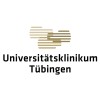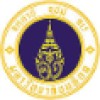
Action Observation Treatment on Motor Function in Upper Limb of Patients With Chronic Stroke
StrokeTo determine the effects of action observation treatment on motor functions in upper limb of patients with chronic stroke

An Exploratory Study of Ganglioside GM1 in Acute Ischemic Stroke
StrokeIschemicThe purpose of this study was to evaluate the efficacy and safety of higher doses of monosialoganglioside GM1 injection in the treatment of patients with acute ischemic stroke.

Stroke Therapy With Brain Oscillation Synchronized Stimulation
StrokeThis randomized, controlled, double-blind clinical pilot trial investigates the therapeutic potential of a novel personalized therapeutic brain-stimulation protocol in chronic stroke patients with spasticity. Stroke patients will either receive ipsilesional 100 Hz transcranial magnetic stimulation (TMS) triplet burst protocol synchronized to the ongoing µ-alpha oscillation or contralesional 1 Hz repetitive TMS (rTMS) protocol. Motor recovery is assessed directly after as well as three months after completion of the therapy.

Efficacy of Modified Constraint Induced Movement Therapy Combined With Threshold Electrical Stimulation...
StrokeThis study, it is aimed to investigate the effectiveness of applied modified constraint-induced movement therapy (MCIMT) with threshold electrical stimulation (TES) in addition to conventional therapy (therapeutic exercise program) in patients with stroke. Before and after the treatment program we will evaluate, the pain level of the participants measured with a visual pain scale; sensory functions with Semmes Weinstein monofilament test battery; muscle tone, and spasticity with the modified Tardieu scale and Digital Palpation Device, which has a very high proof value; functional status with Wolf motor function test and Motor Activity Log; quality of life will be assessed by Stroke Specific Quality of Life Scale. Participants will be included in the study according to the inclusion criteria, the first evaluation of the participants will be made according to the evaluation parameters, and the participants will be randomly distributed into three groups. The first group will be treated with M-CIMT, the second group will be treated with MCIMT with TES for 4 weeks, and the third group will be the control group. A total of 45 participants will be included in the study.

Effects of Imaginary Resisted Exercise Versus Physical Resisted Exercise on Hand Grip Strength in...
StrokeThe goal of our study is to make a comparison between the effectiveness of physical resistance exercise and imaginary resistance exercise in improving handgrip strength, dexterity, and eye-hand coordination among stroke patients.

Perfetti Method on Upper Extremity Spasticity of Stroke Patient
Stroke Syndrome Sequela SpasticityThis study objective is to study the immediate effect of Perfetti Method in reducing spasticity of upper extremity in stroke patients at the Department of Physical Medicine,Faculty of Medicine Ramathibodhi Hospital, Thailand. Participants were randomized into experimental group who received therapy according to the Perfetti method, and controlled group who underwent passive stretching exercise. Duration of treatment was 15 minutes for every case, regardless of the treatment. Evaluation of spasticity immediately before and after treatment according to Modified Tardieu scale (MTS) and Modified Ashworth Scale (MAS) by same blinded assessor.

Cerebral Blood Flow-guided Early Rehabilitation Intervention After Stroke: a Pilot Randomized Trial...
Acute StrokeThe primary goal of most acute stroke interventions is to restore cerebral blood flow (CBF) in the affected region and prevent hypoperfusion during early clinical course. Diffuse optical technology offers a new opportunity for invasive, real time and bedside assessment of brain function biomarkers, including CBF. However, whether CBF monitoring can identify patients who are most likely to benefit from therapies is unclear Recently, it was suggested that the benefit of early mobilization (EM) after stroke on motor recovery may be outweighed by a deleterious effect on cerebral perfusion if cerebral autoregulation (CA) is impaired. Hypothetically, EM could improve recovery outcomes after stroke in selected patients based on CA function. Our objective is to investigate if EM leads to superior motor and functional outcome after stroke compared to standard care (SC) in selected patients based on optical biomarkers of CA and evaluate the feasibility of the clinical use of a novel transcranial optical monitoring system adapted to deliver biomarkers of CA at the bedside. The investigators designed a randomized controlled, open-labeled trial with blinded assessment of outcome end-points in a stroke unit of a tertiary stroke center. Patients with an ischemic or hemorrhagic stroke will be recruited and randomly assigned within 24 hours after symptoms onset to receive SC alone or EM in addition to SC. All patients will undergo optical monitoring of CA on admission to the Stroke Unit during the first mobilization. Randomization will be stratified by stroke severity and type of stroke. Clinical outcome will be assessed with the Postural Assessment Scale for Stroke (PASS) and modified Rankin scale at 90 days. Safety outcome will be assessed by recording the incidence of neurological deterioration, recurrence and falls.

The Effects of Neuromuscular Electrical Stimulation on Swallowing Functions in Stroke Patients With...
StrokeSwallowing Disorder4 moreIn our study, our aim is to evaluate the effect of neuromuscular electrical stimulation added to traditional dysphagia therapy in stroke patients with dysphagia, on functional oral intake status, dysphagia-related symptoms, quality of life, and complications related to dysphagia.

A Study to Evaluate the Q Revascularization System for Neurointervention in Acute Ischemic Stroke...
Acute StrokeCerebral IschemiaAssess the safety and efficacy of the Q Revascularization System to remove thrombi and emboli from the neurovasculature in patients experiencing an acute ischemic stroke

Balance Training on Vestibular Function and Proprioception Feedback in Stroke Patient
StrokeIschemicThe aim of this study was to find out the role of balance training on vestibular function and proprioception feedback in stroke patients. It was a randomized control trial and was conducted in civil hospital Gujranwala. Current study was completed within the time duration of 6 month. Sample size of twenty four patient consists of both male and female aged between 50 years to 75 years. Each group contain 12 patient .Group A was experimental group which received balance exercise in two phases and group B (n=12) was control group received conventional therapy. Each of exercise program begun with 10 mints warm up consisting of walking ad light stretching of hip flexor. The balance training group received the balance training exercise twice a week for 6 week each session comprise of 60 minutes. Each set consisted of 4 periods of 11 exercises and rest of 40 seconds. Many exercises over time was turned into circuit training. Data was analyzed by using SPSS version 23.
